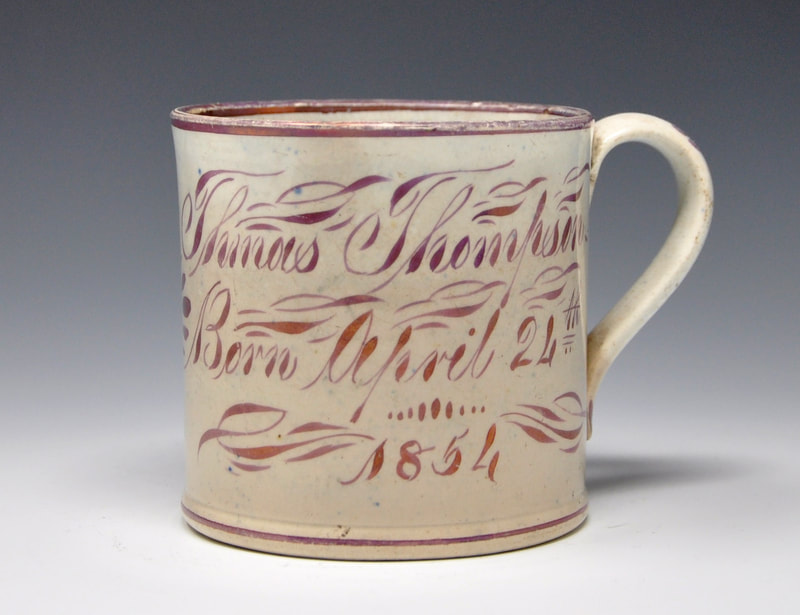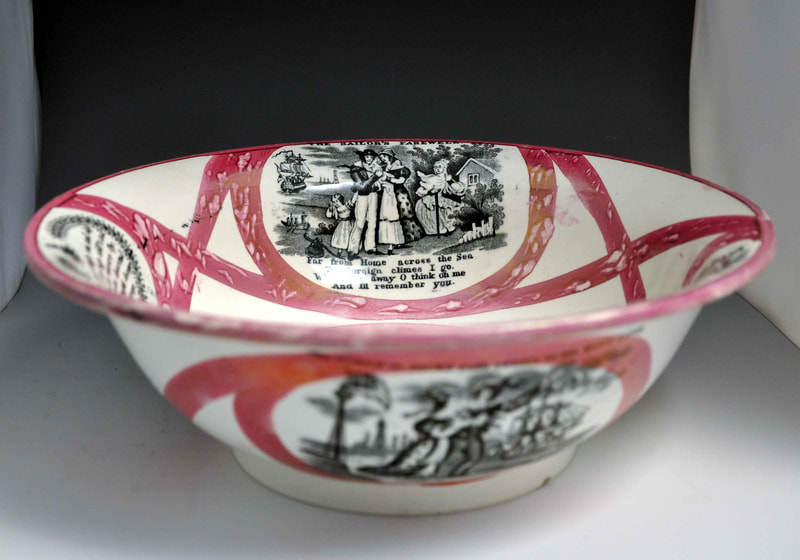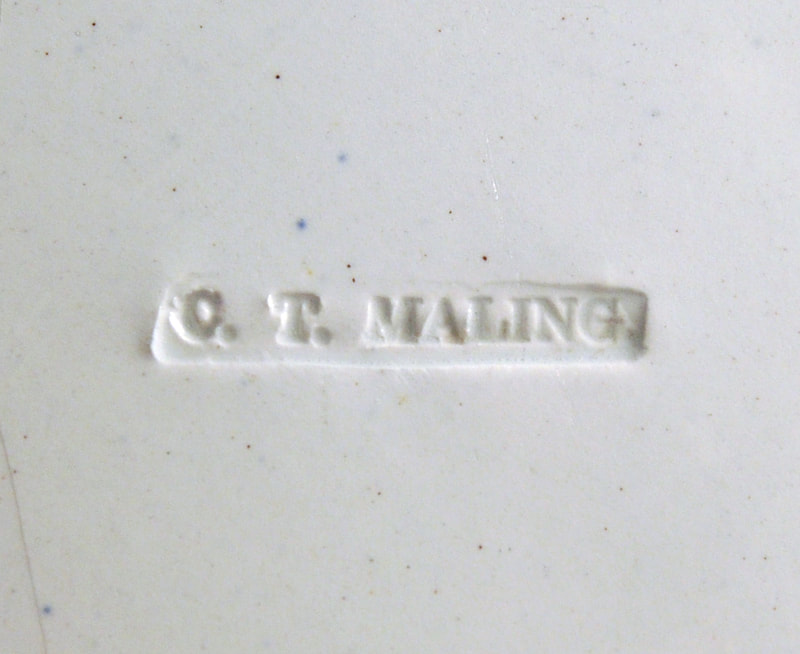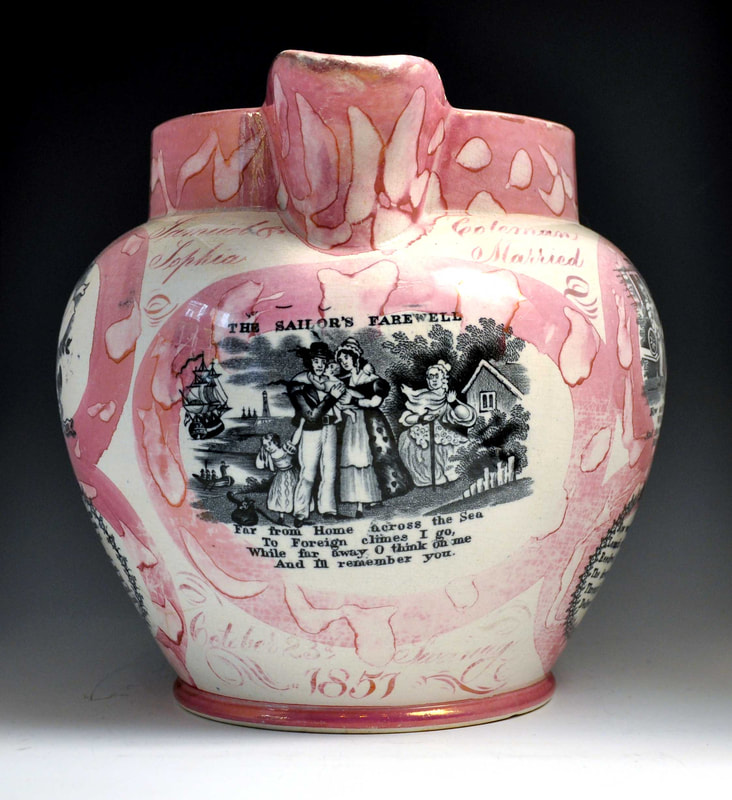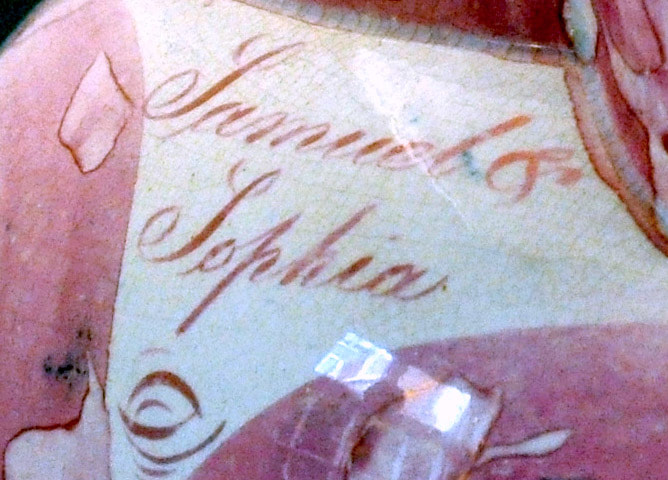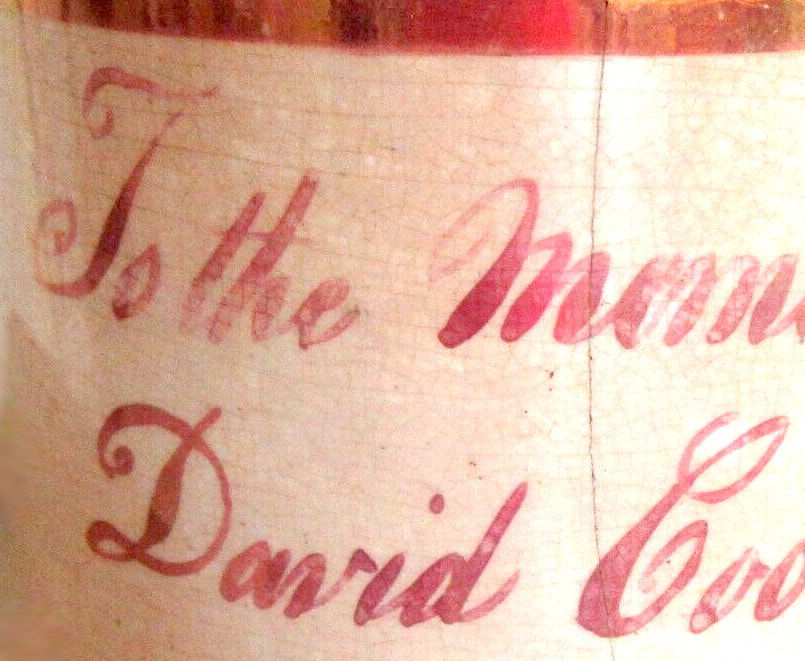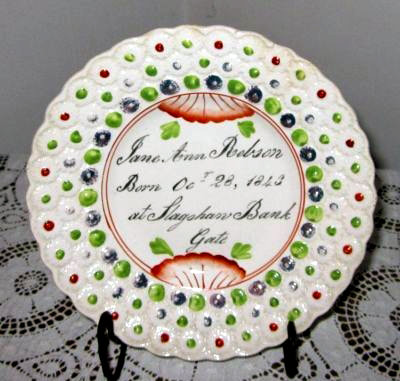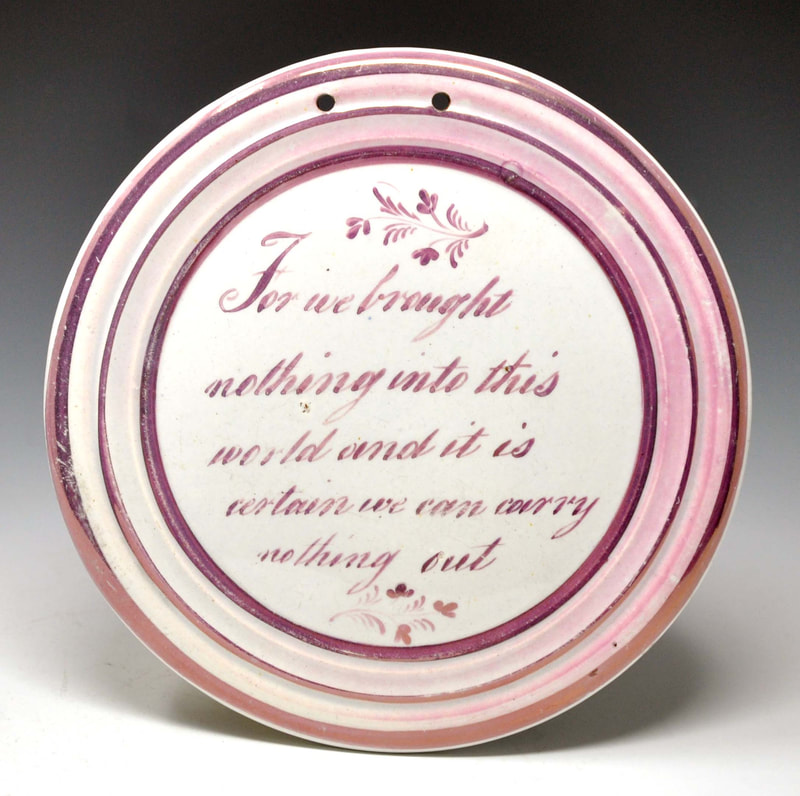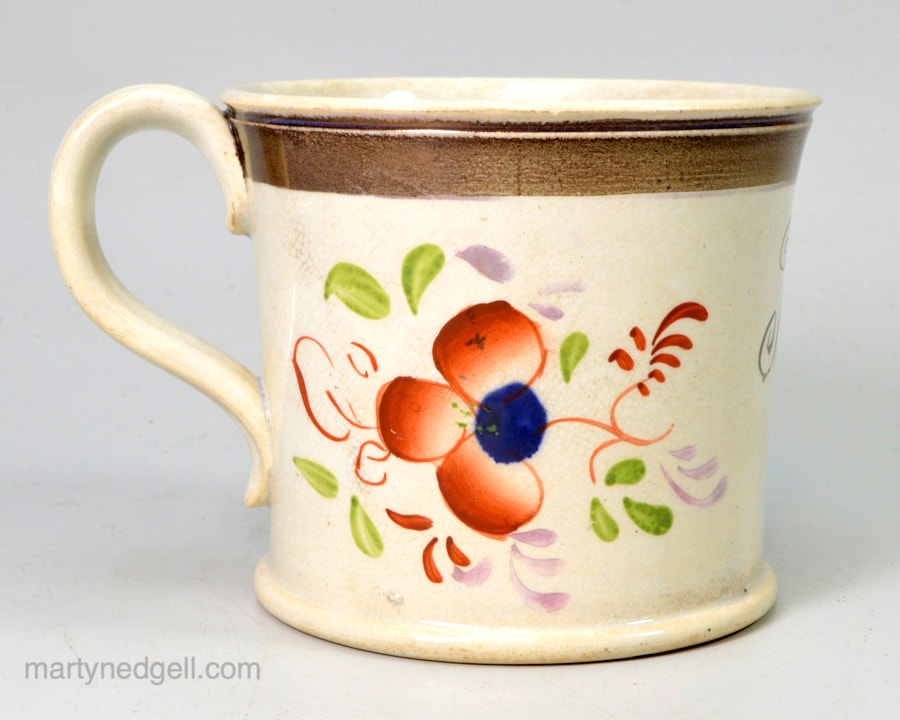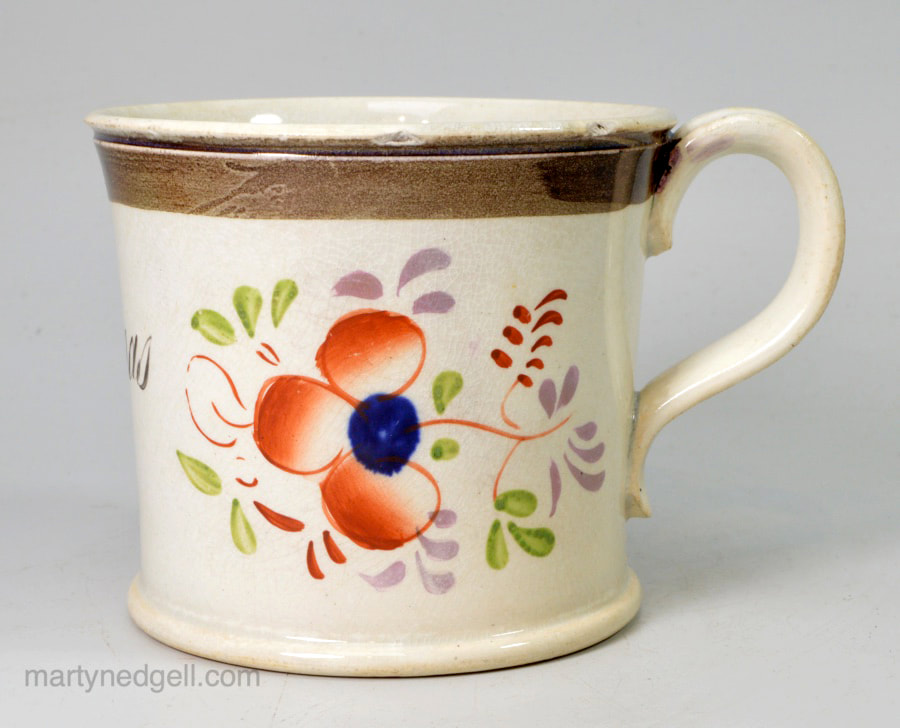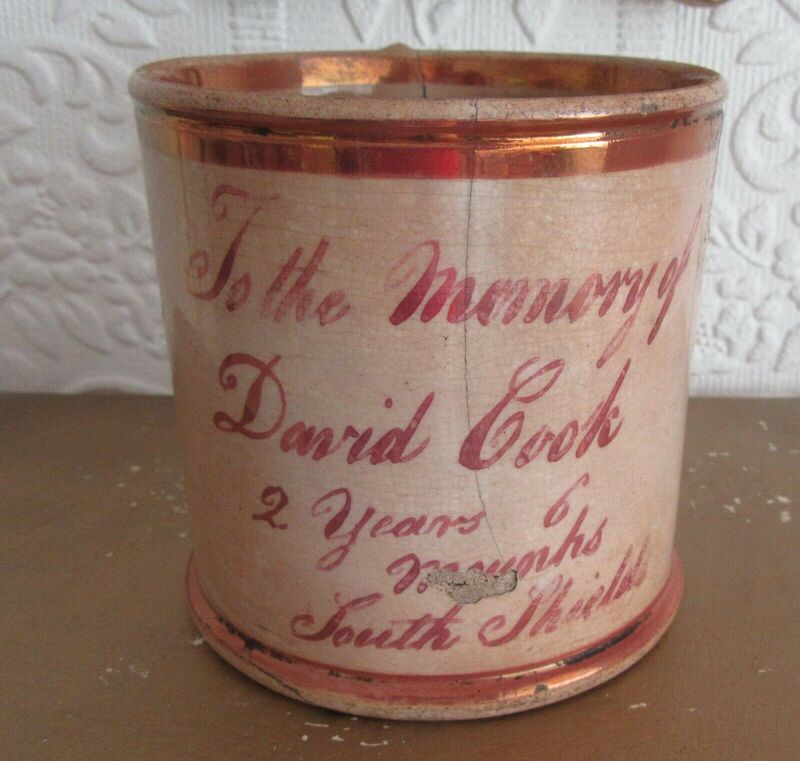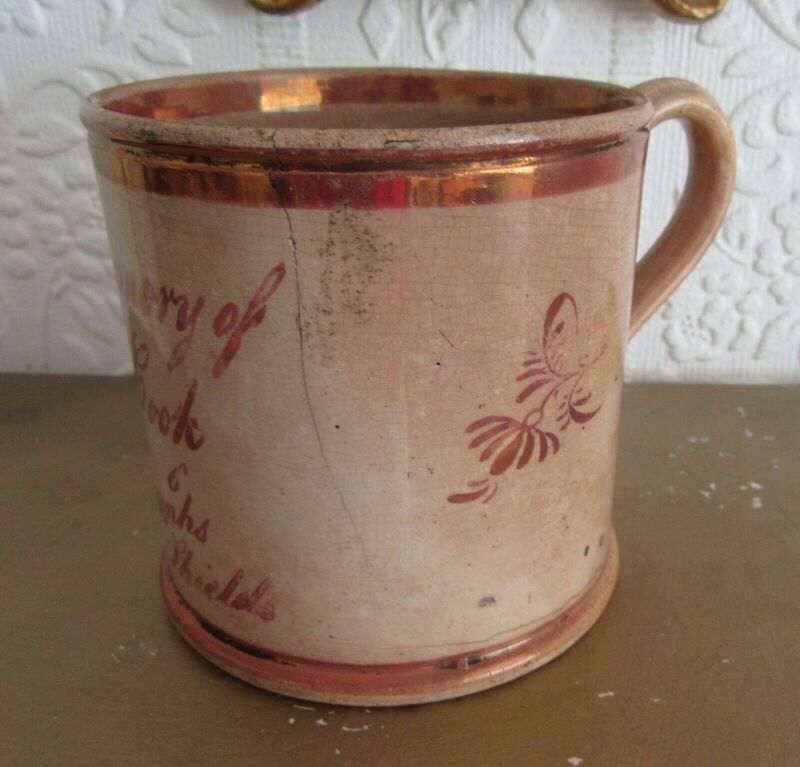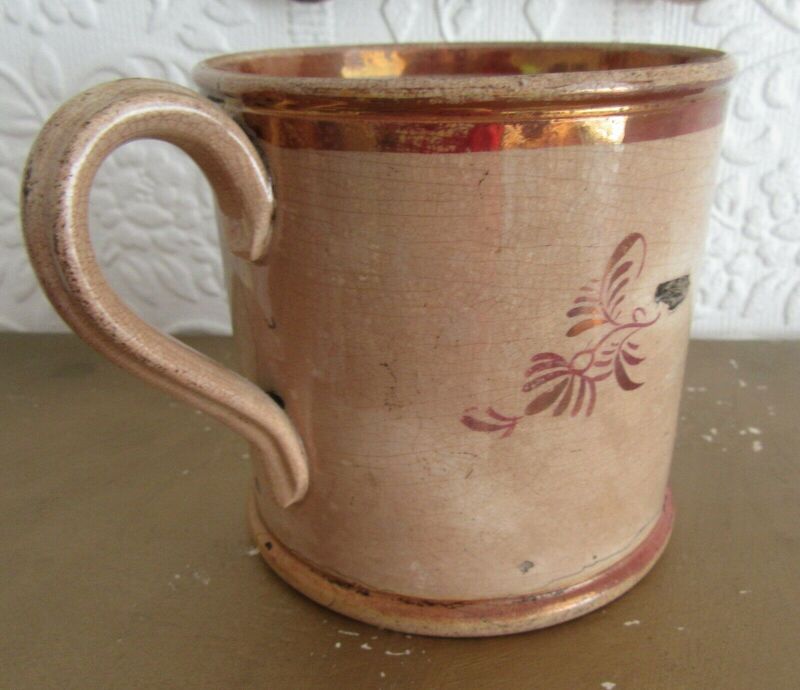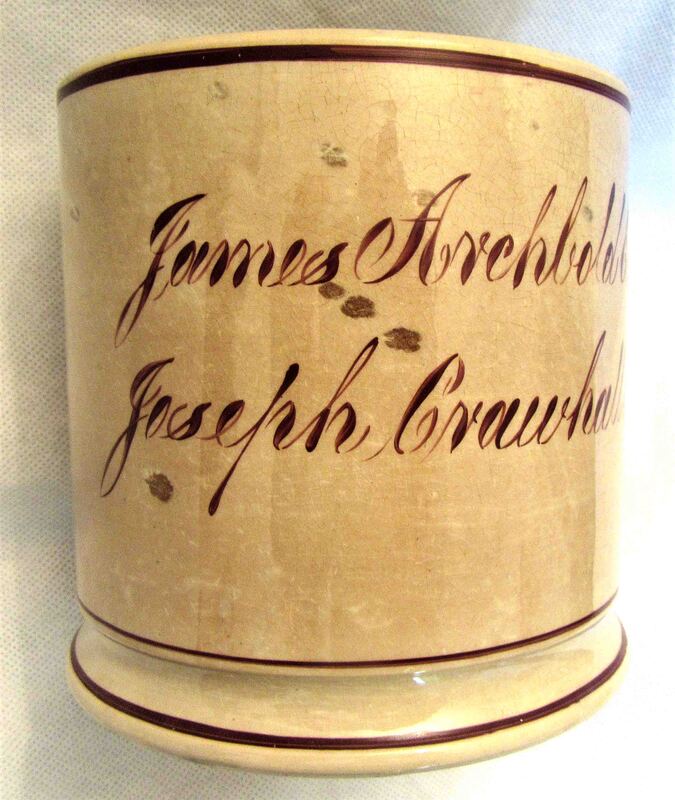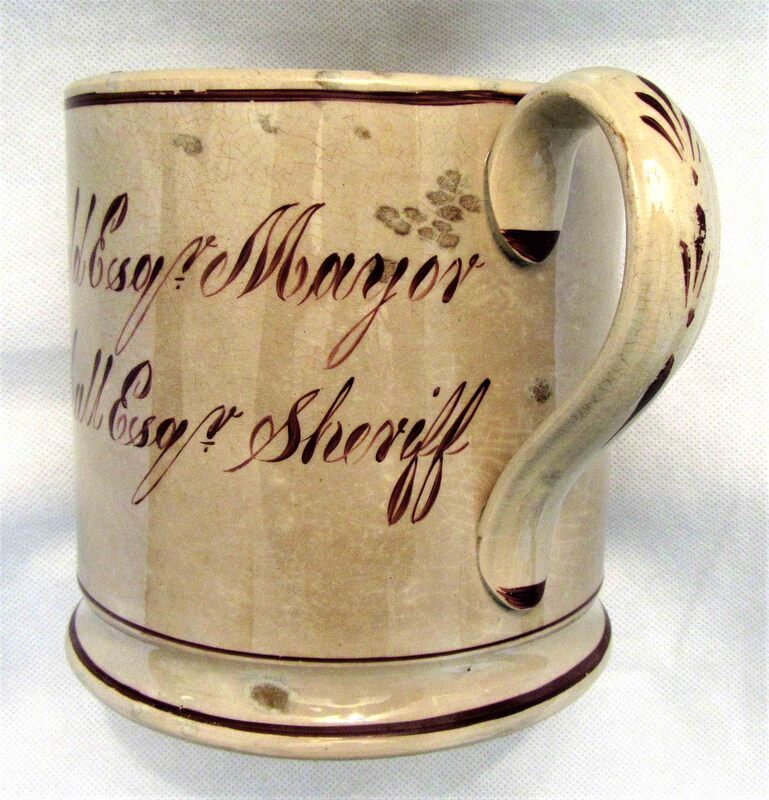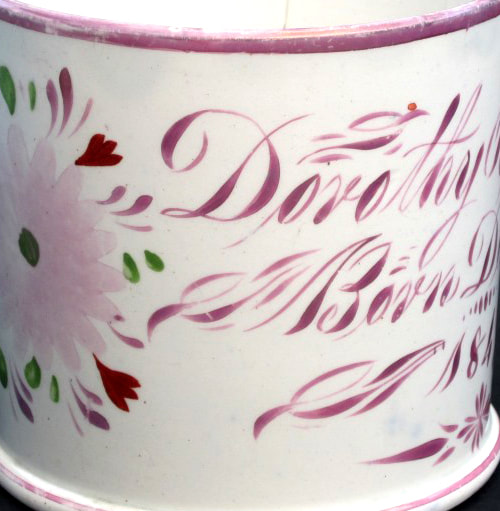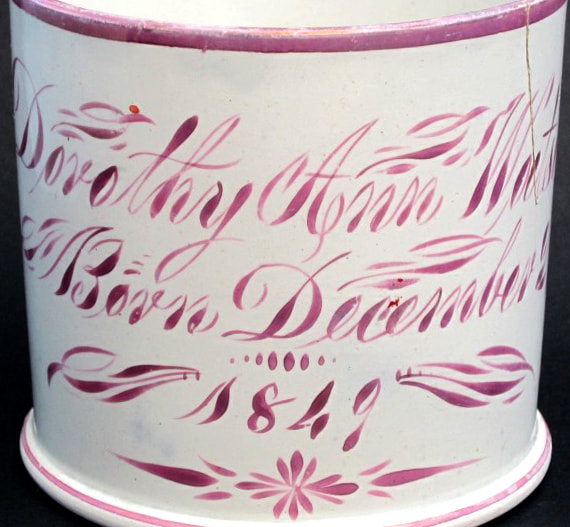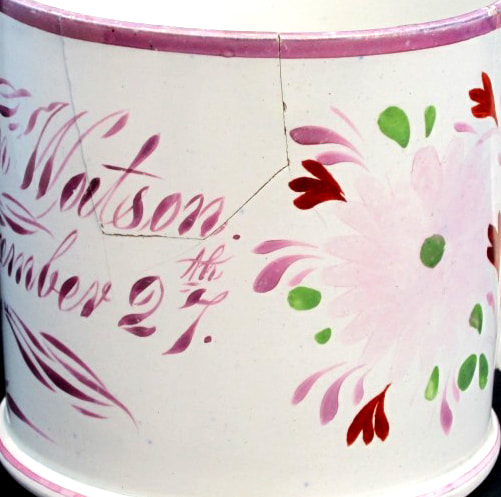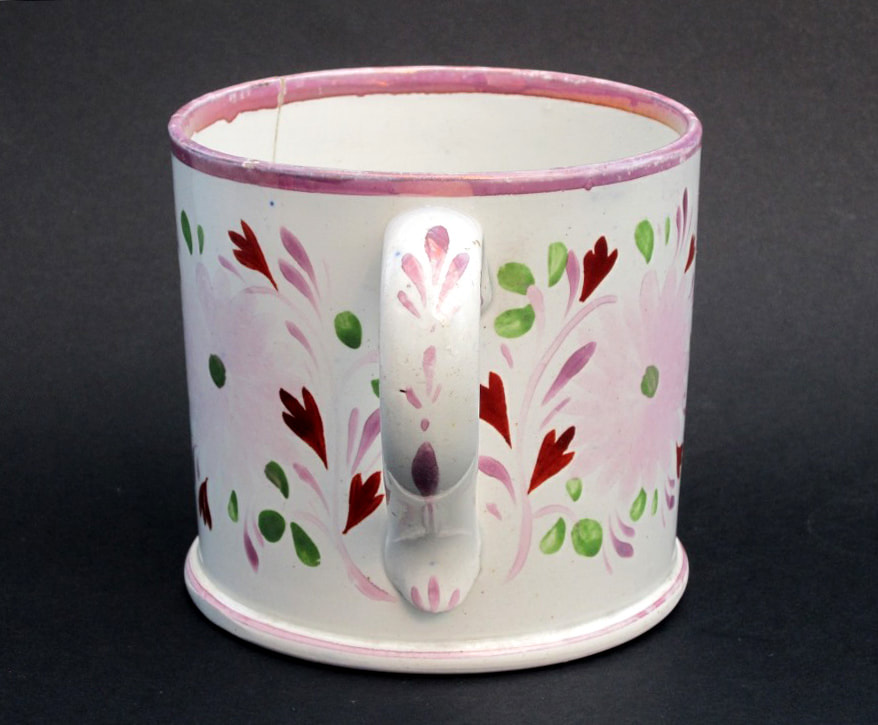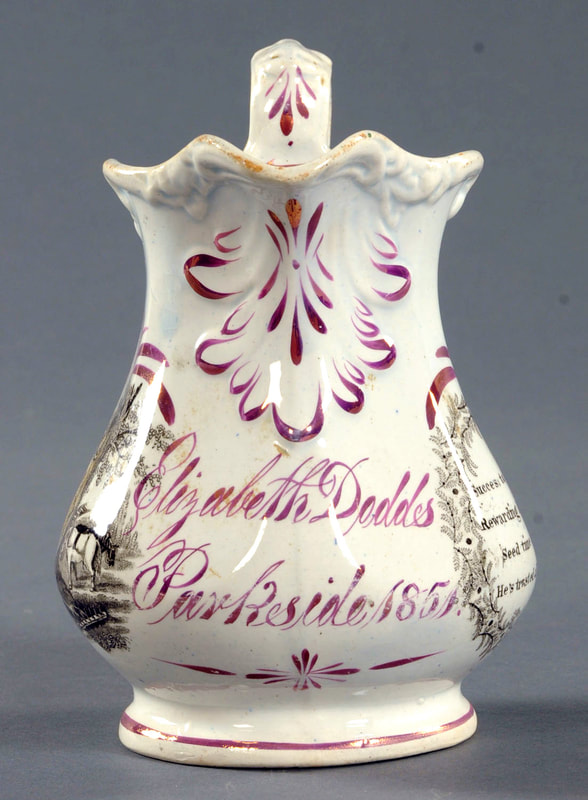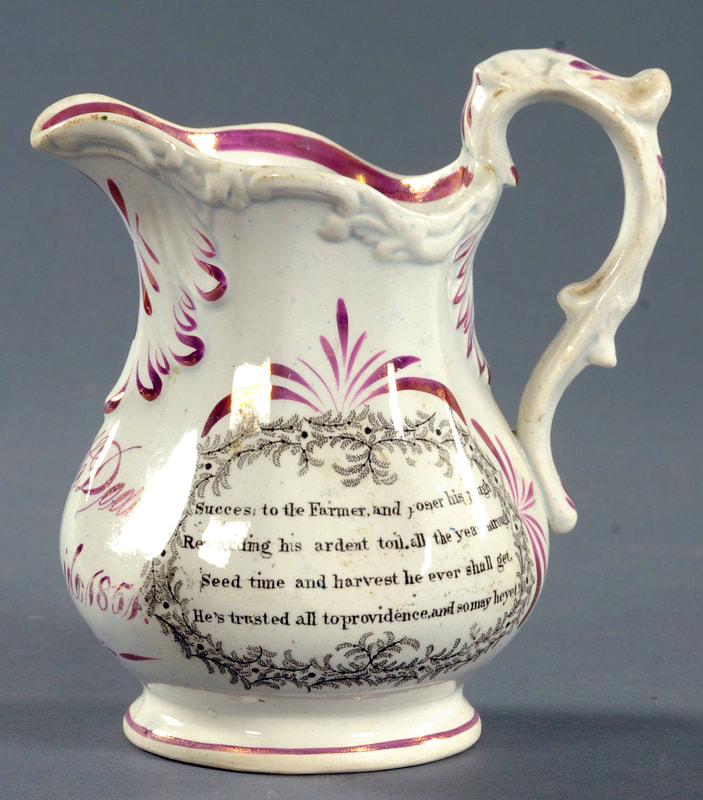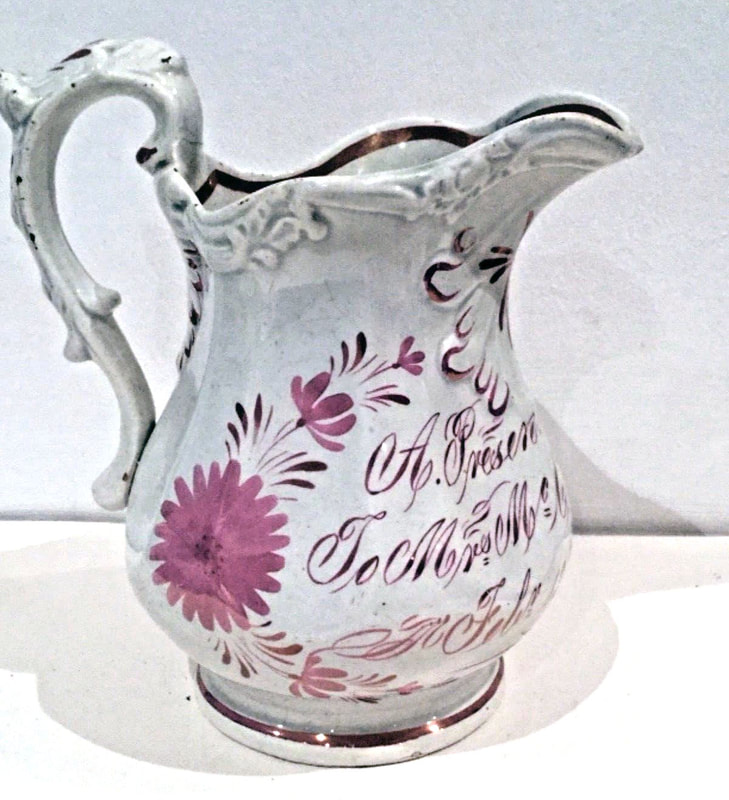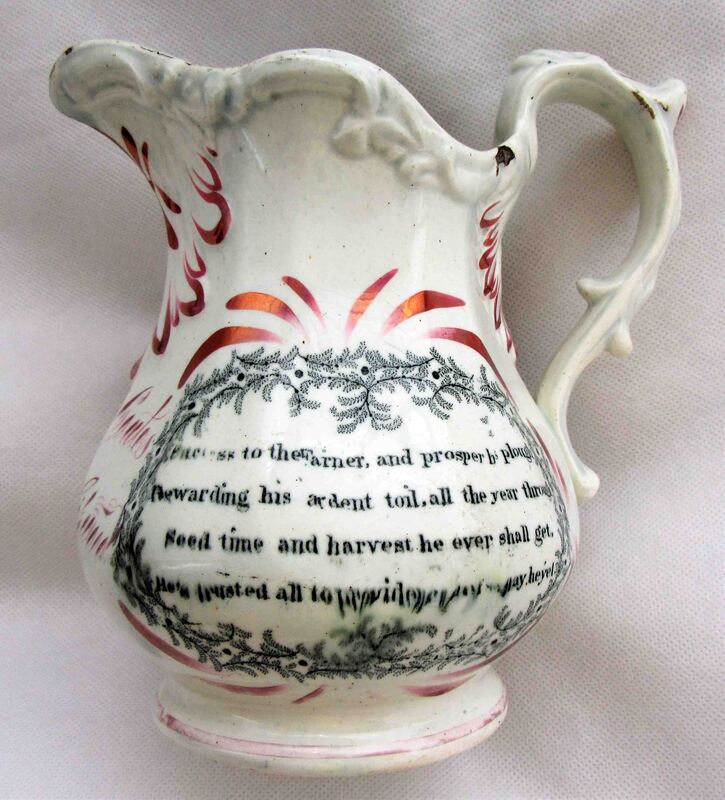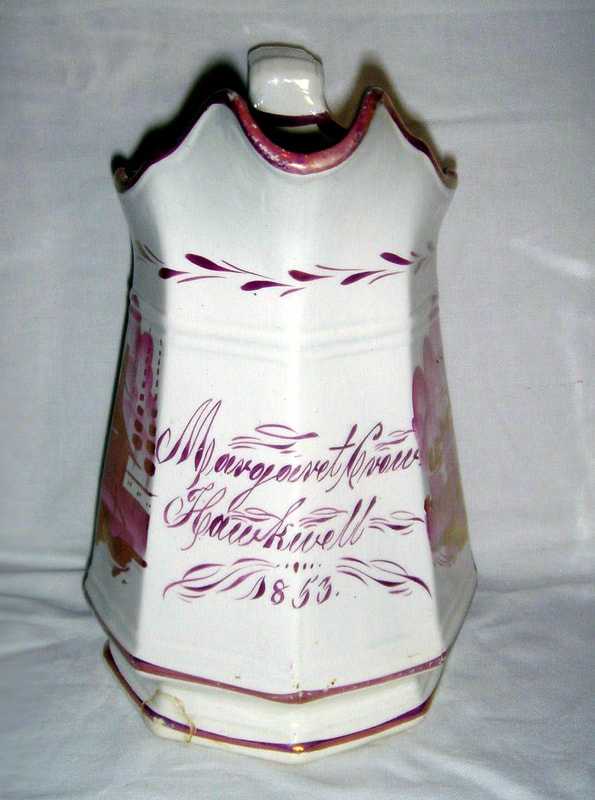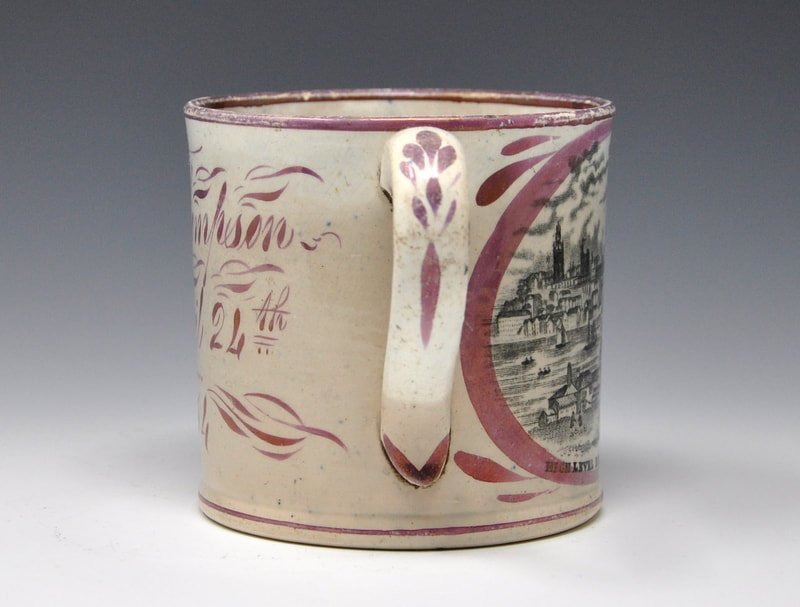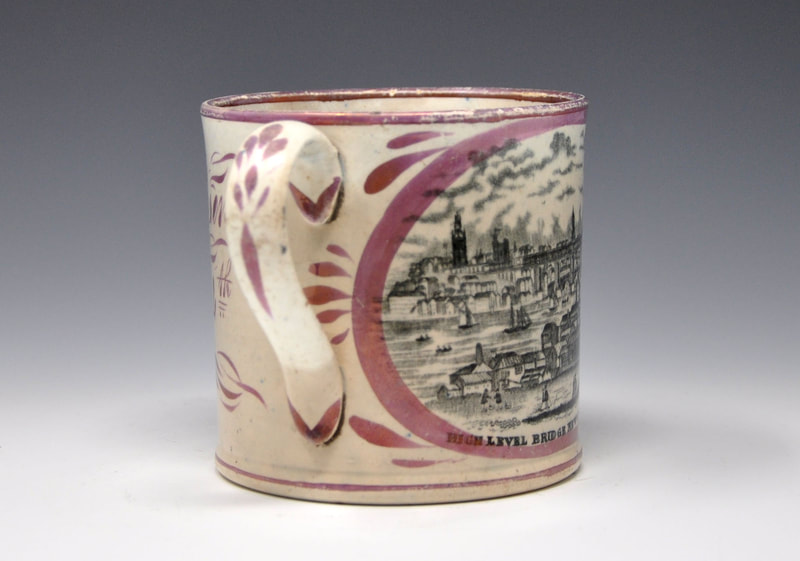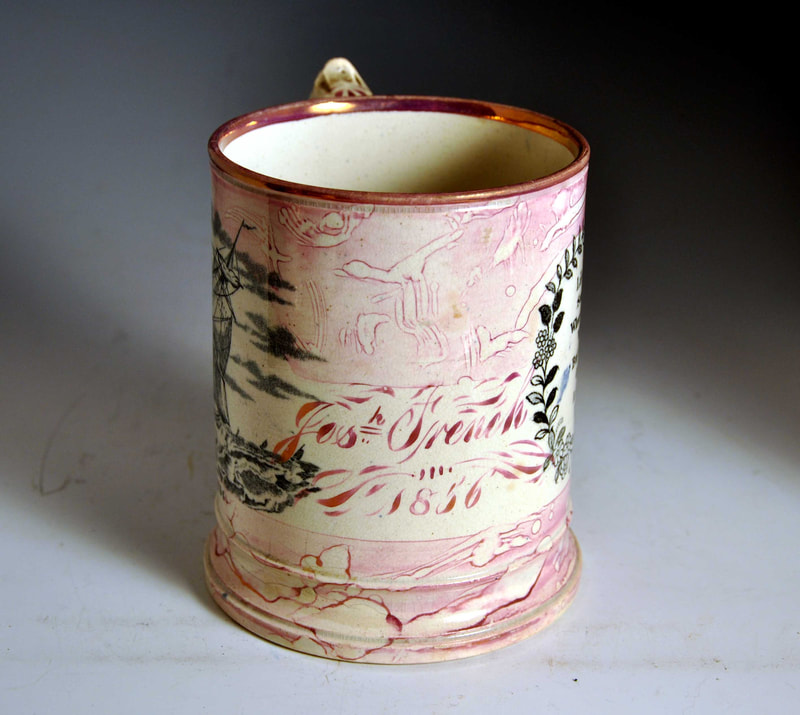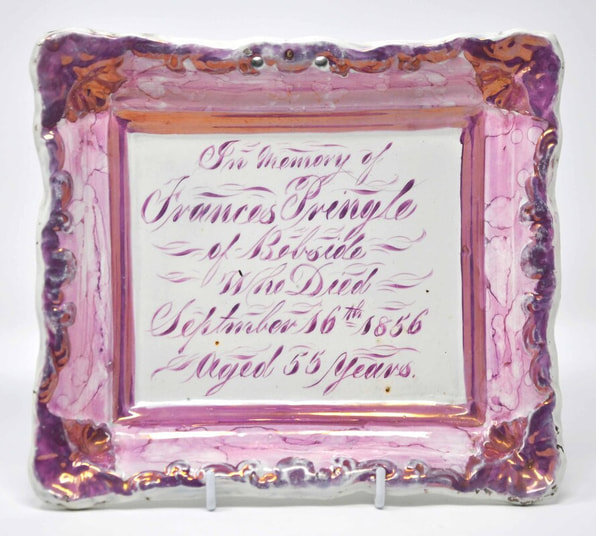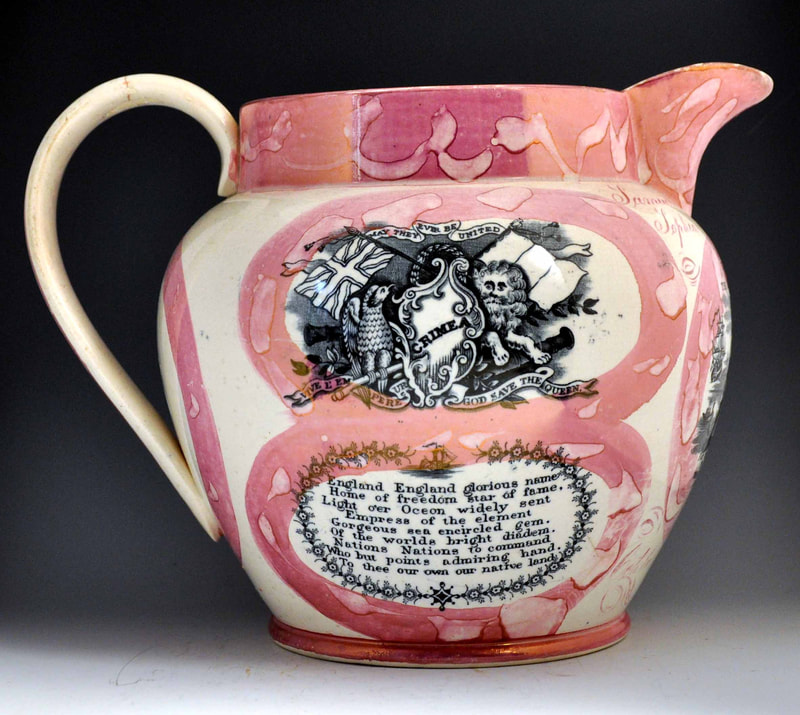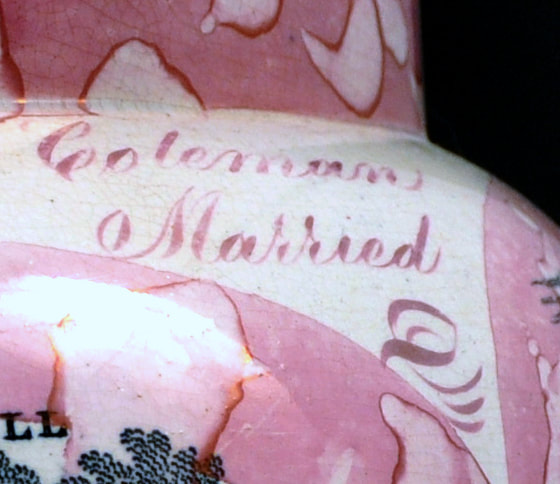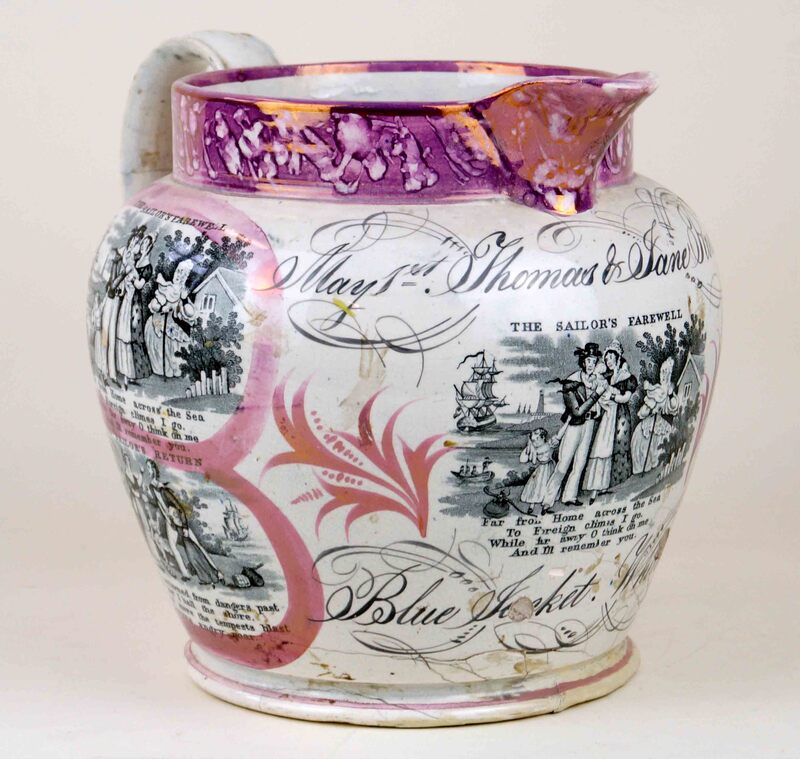C T Maling inscriptions
According to R C Bell, Christopher Thompson Maling took over the Ouseburn Bridge Pottery in 1853, from his father, Robert Maling. C T Maling opened the Ford Pottery in 1859. So the items on this page were made at Ouseburn Bridge.
There are two styles of inscription on this page, typified by the two plaques below. They are similar, but likely the work of two different enamellers. Both can be traced to CT Maling, and appear on objects from the 1850s.
Firstly, the distinctively flowing italic script on the mug below, which matches the left plaque above. It is attributed to C T Maling on the basis of the shared High Level Bridge transfer that appears on the marked bowl below in the Sunderland Museum & Winter Gardens, Tyne & Wear Archives & Museums collection. The catalogue says the bowl has a triangular impressed mark with the initials CTM. This form of script appears to have been used from the 1840s to 1856.
Secondly, the jug below has similar script to the right plaque above. It shares the Sailor's Return transfer that appears on bowls with the C T MALING impress. This appears to be a later hand, used on items from 1857.
Robert Maling items with similar script
|
The first group of items in this section (pre-1853) have an almost naïve hand with long curly tails on the capital letters. The left details are from the plaques below, presumably made in the 1840s and the right details from a mug made in 1850. Compare them with the marriage jug above made in 1857. It is possible they are by the same hand. The plate in the top centre below has a Maling impress, but unfortunately I don't have a record of the mark. It also has a dated inscription for 1843, so firmly within the Robert Maling period at Ouseburn Bridge. The plaques and mug below have similar script and are attributed to Robert Maling on that basis. |
Like many of the North East potteries, Maling was producing so called 'Gaudy Welsh' items. The 'T' on the mug below unmistakably similar to that on the first two plaques above.
Thanks to Norman Lowe for identifying the inscription on this mug as follows: David Cook was buried at St Stephen’s South Shields on 28 April 1850 which would make his birth around October 1847 (although the burial notice estimates his birth year as 1848). This fits with the David Cook christened 1 December 1847 at S Hilda’s South Shields or the David Cook christened at the same place on 30 January 1848. So we can reliably date the mug to 1850 or after.
And thanks to Ian Holmes for the following information about the mug below: James Archbold was Mayor of Newcastle in 1846 with Joseph Crawhall as Sheriff. Crawhall was Mayor in 1849 but without Archbold. So 1846 is a reliable date for this mug, and 4 years earlier than the mug above. It has the curly capitals of the earlier plaques above, but is in a more assured and neater hand, and a good match for the early 1850s' items below.
Inscriptions in date order
This mug, with hand painted flowers, has an inscription dated 1849 so predates the CT Maling period. It is included here because it is the earliest dated example I have seen with the italic script. Norman Lowe informs me that Dorothy was born and christened in Woodhorn, Northumberland, and is recorded at living in Morpeth in 1851, with her mother Isabella and grandfather Robert who was a tailor.
This jug, and the one beneath it, also belong to the Robert Maling period, as their inscriptions predate 1853.
These mugs are interesting because the inscriptions might relate to the Snowball family of potters. According to Baker, a Thomas Snowball (b 1830) set up the High Southwick Pottery in around 1850, aged 20 or thereabouts, He and his brother Ralph (b 1832) 'worked mainly as pot decorators at Sheepfolds Warehouse'. It doesn't seem likely that either of the brothers decorated the mugs below, which have Maling-attributed transfers, and whose inscriptions and date match others on this page.
Although undated, this jug is very similar in decoration and form to the two above.
After 1856, the inscriptions resemble the less assured of the Robert Maling period.
Below, a similar jug to the one above, from the Crimean period, with masonic, maritime and farming emblems.
Food for thought
The jug, left below, is apparently by the the first hand described in the introduction above, and yet has a Farmers' Arms transfer that is firmly attributable to the Newcastle Pottery, Forth Banks. So perhaps the enameller worked there after leaving Ouseburn Bridge, c1856. Or perhaps he jobbed for both potteries. The right jug below has C T Maling transfers, but the script is again slightly different.



